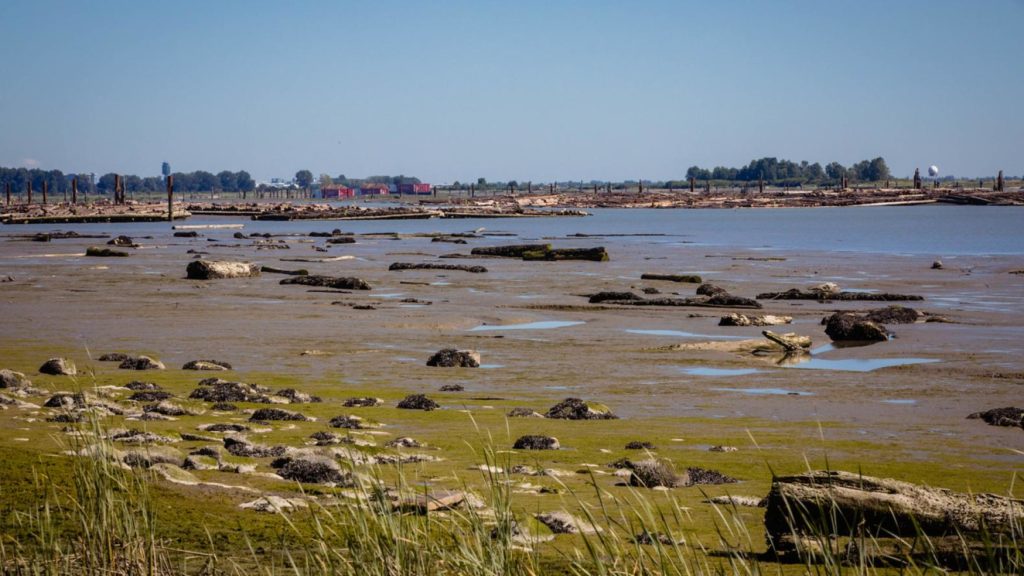
The introduction of Canada Geese in B.C. has led to the overgrazing of wetlands, negatively affecting biodiversity and flood protection in our estuaries. Sustainability Scholar Dominic Janus recently led a tour of the Pacific Spirit Park foreshore on unceded xʷməθkʷəy̓əm territory (Musqueam), to show the Sustainability Hub team firsthand the how these geese pose a threat to these salty marshes, especially to an ecologically important grass-like group of species, the sedges.
Janus is a UBC master’s student in the Conservation Decisions Lab and a Sustainability Scholar who is researching management and conservation in the Fraser River Estuary. He focuses on Lyngbye’s sedge (Carex lyngbyei), a dominant species at low to mid elevations in saltwater marshes across the west coast of North America. These marshes act as natural infrastructure that protect shorelines from flooding, nurse many fish species, and sustain some of the most efficient carbon storage worldwide. Due to various stressors like urban development and sea level rise, we’ve lost 85% of the Lower Fraser River’s floodplain habitats since the arrival of settlers.
Despite wetlands providing many valuable ecosystem services to us, Janus showed some sedge that had been heavily grazed on at the water’s edge hinting to us another, less well known, threat to the estuary.
Canada Geese are not native to Southern Coastal BC. They were introduced in the 1960s and 1970s as a “re-introduction” effort for one of their subspecies that was endangered and the hopes that they would provide wildlife viewing and hunting opportunities. Since the 1960s, their population has exploded to at least 20,000 residing in the Fraser Valley, where they have been eating a lot of sedge in the Fraser River Estuary. With few predators, and strong-but-fair legal protection under the Migratory Birds Act,1994, there hasn’t been an effective means in of keeping the geese populations in check, and subsequently not a lot protecting the sedge grass from their ravenous appetites.
This problem extends to almost all estuaries in Southern coastal BC, including on Vancouver Island. Similar problems have been documented in estuaries on the east coast of the United States. Canada Geese breeding in the Gulf Islands and other ecologically sensitive islands of Southern BC are also threatening many at-risk species.
Leaving the marsh, Janus sent the Sustainability Hub team off with a message saying everyone who values our fish, birds, whales, Canadian biodiversity, and the many cultural, recreational, economic, and industrial values of the Fraser River Estuary should know that we are on course to witness extinctions of many wild populations as the Fraser River Estuary continues to lose its productivity and fisheries. We can learn from the estuary’s rich culture and biodiversity, and find solutions that benefit ecosystems and communities for many generations to come.
Please visit the Sustainability Hub website to read the full story.
UBC is committed to supporting the ongoing development of sustainable, healthy and connected campuses and communities, through Strategy 3: Thriving Communities.